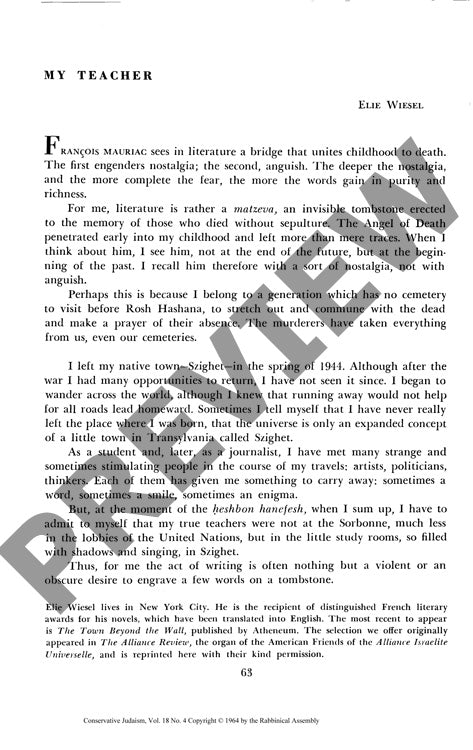My Teacher
Couldn't load pickup availability
This reflective essay by Holocaust survivor Elie Wiesel examines the profound influence of his childhood religious teachers in Szighet, Transylvania, on his identity as a writer and human being. Through detailed portraits of his instructors—including "The Rabbi of Batize," "Zeide the Melamed," the "Selishter Rabbi," and others—Wiesel employs memoir methodology to explore how traditional Jewish pedagogy shaped his worldview and literary voice. The author describes his progression through traditional Jewish education, from learning the Hebrew alphabet to advanced Talmudic study, emphasizing the unique pedagogical methods and personal characteristics of each teacher. Wiesel's analysis reveals how these educators transmitted not merely textual knowledge but also "the chant"—a spiritual and melodic dimension of learning that contemporary teachers lack. The essay's central finding is that literature serves as an "invisible tombstone" for those murdered in the Holocaust, with his teachers' voices continuing to guide his writing despite their deaths in Auschwitz. Wiesel concludes that his literary work functions as both memorial and continuation of his teachers' legacy, suggesting that authentic teaching transcends death through the perpetuation of spiritual and intellectual traditions in the student's life and work.

More Information
-
Physical Description
-
Publication Information
Published 1964
ISBN
-
Publication Credits
Elie Wiesel

